Last-Minute NYC Holiday Gift Guide 🎁
We’ve created a holiday gift guide with presents for the intrepid New Yorker that should arrive just in time—

A museum in Jacob Riis' hometown honors the urban photography he made in New York!

Any student and enthusiast of New York City’s urban development knows Jacob A. Riis, author of the book How The Other Half Lives. Whether you’re in class, have gone to one of the Tenement Museum’s enlightening tours, or stumbled upon one of the many pieces of city infrastructure named after him, you've likely seen Riis' photographs or his name.
His work as a photographer was so influential that it catalyzed New York’s housing policies, and—in turn—arguably influenced the very shape of the city’s buildings, including many of the ones we continue to live in today, from the Lower East Side to Washington Heights. His work, at its core, embeds itself in the subconscious urban condition of every New Yorker.
One of Riis’ strongest connections, Theodore Roosevelt, lauded him as the “ideal American.” But this “ideal American” was not originally American; he was born and raised in Denmark. And, on the contrary, Denmark has never been a predominantly urban country. Most Danes even today hail from small cities throughout the countryside, and boy it is magnificent. Rural Denmark is the land of quaint island weddings and thatched homes, tall grass, and wind-beaten shores.
And Riis was no exception, coming from Denmark’s heartland: Jutland. Near Jutland’s harsh and sandy west coast is Ribe, a small town that dates back to the Viking ages—Riis' hometown. In Denmark, Riis was virtually unknown until historian and narrative non-fiction writer Thomas Buk-Swienty came across his story at a photographic exhibition in New York. He, along with Flemming Just, formed the concept for a museum dedicated to Riis, situated right in his hometown which was already a popular tourist destination for Danes and road-tripping Germans.
Ribe is Denmark’s oldest town. Like many medieval cities, its cathedral takes up a commanding presence in any field of view. For Jutlanders, Ribe is a local treasure.
During a trip to Denmark, my friend suggested that we visit the town of Ribe. Upon a quick glance at Ribe’s points of interest, one stuck out to me: the Jacob A. Riis Museum. I immediately made it a priority to visit, as it was also a chance to share a bit of New York with my Danish friends.
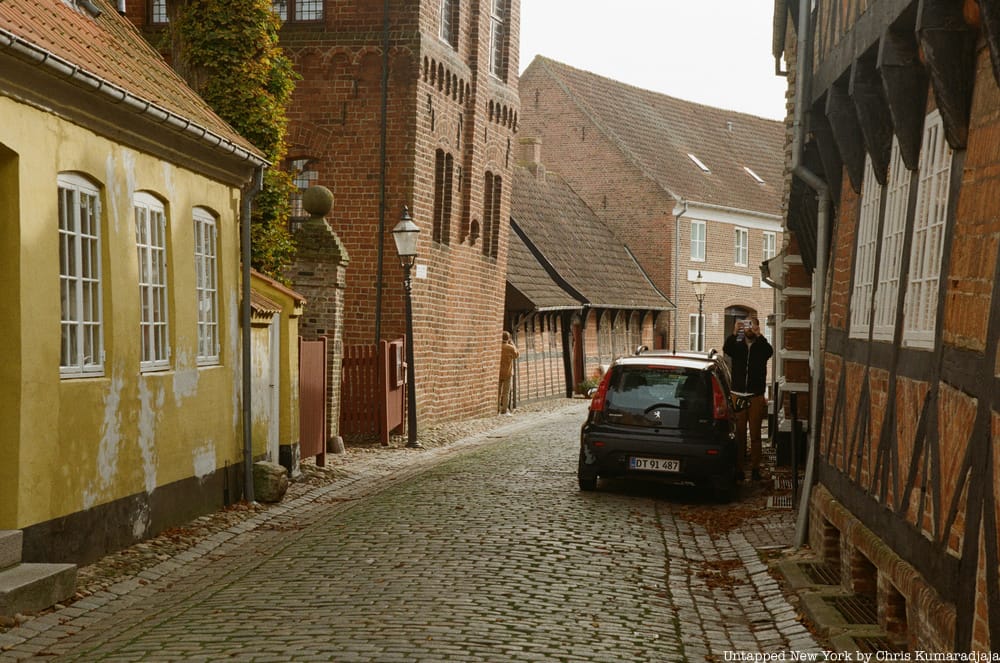
The museum is located in a block of medieval buildings, the oldest of which dates to 1583. Danish medieval buildings are notorious for being ridiculously off-kilter. Their exterior walls bow in or bow out, and sometimes their floors are so slanted that they often engulf entire courses of bricks. Denmark’s oldest vernacular buildings are a part of what makes rural Denmark so unique; farmhouses with thatched roofs made of seaweed almost three feet thick, and timber buildings so askew that they look like they’re falling down very, very slowly make the old Danish landscape look modestly fantastical.
However, the Jacob Riis Museum, with its extensive modern renovation, not only has completely level floors, but it is also completely wheelchair accessible, even with a few high-tech steps that turn into lifts!
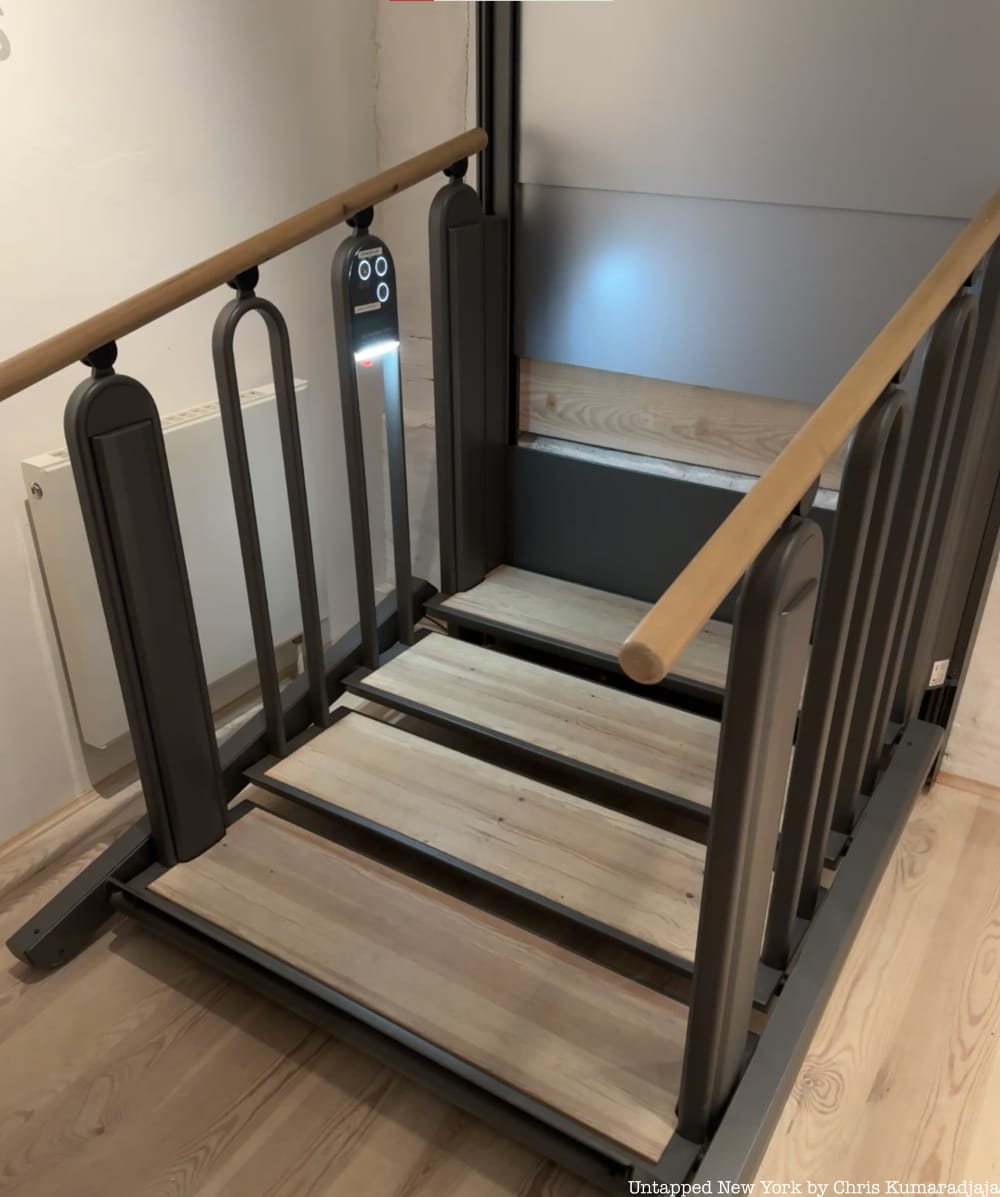
The museum perfectly packages Jacob A. Riis’ story into a biographic museum with an old-fashioned New York flavor. The museum’s exhibitions comprehensively portray Riis' life journey and its stages. His immigrant experience was an outlier, in that within his own lifetime, he was able to transition from menial labor jobs to influential white-collar positions. Knowing this, I was even more impressed when the museum recounted this transition. For most other immigrants, it takes generations.
It is also important to note that Riis's renown cannot be attributed to only photos. Riis was a very talented writer and shrewd networker. He engaged the likes of many influential people, including New York’s mayors and even Theodore Roosevelt. The museum boasts copies of Riis’ first-edition publications, as well as some of his personal belongings from his life in America, brought later to Denmark.
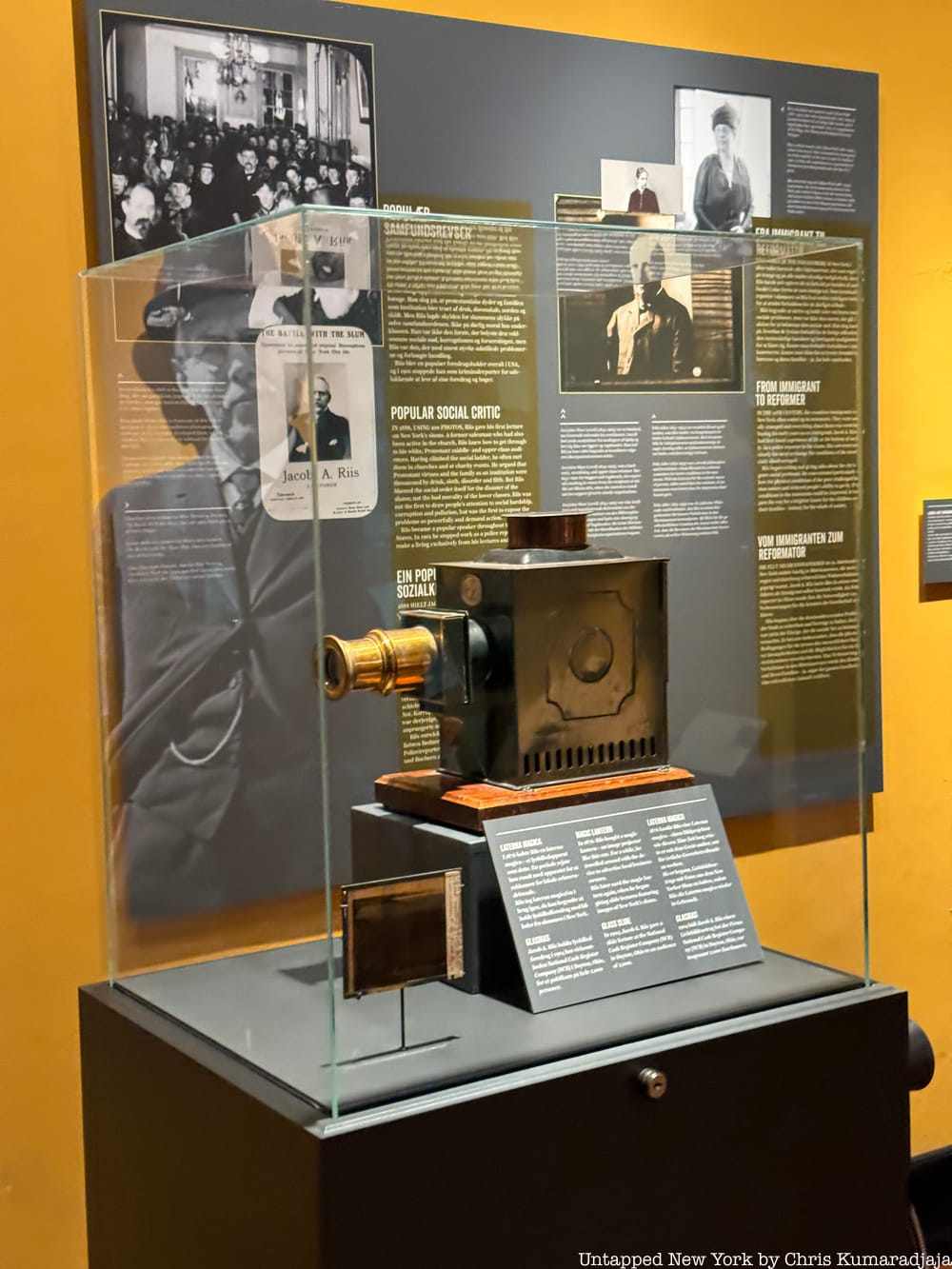
Riis was a product of the Romantic Age, which the museum captures in its 22-minute mini-biopic by Saxofilm, one of the first stops in the museum experience. The film is in Danish, but English and German-language headsets are available. Full of narration and reenactments creatively superimposed over Riis's original photographs, the film follows his life, from the hardships to the redemptions. The film recounts his resolve, his faith, his dedication to the woman he would eventually marry, and his interest in the technology that would bring the wretched living experiences of a whole third of New Yorkers (and by extension, his own) to the limelight. The film depicts Riis' interactions with his photographic subjects, as he coaxed them into striking poses.
To my satisfaction, the scenes that took place in Denmark could very well be the exact places where the original events happened. The scenes that took place in New York were a little harder to replicate. Nonetheless, the film managed to resonate in its depiction of Riis’ life. It’s amazing the kind of daring one can have, when one’s beloved responds to his proposal with “I will never be able to love you.” In Riis's case, that daring sent him thousands of miles away to bustling New York City, which quickly became the world’s biggest city within his lifetime. He was just 21 years old.
Riis' experience in America began brutally. He was subject to constant workplace abuse and chronic homelessness, and his only companion, a puppy, was killed by a corrupt policeman. Eventually, his life turned around step by step. He took a job as a criminal reporter, shedding light on the wretched and unjust lives of poor immigrant New Yorkers at the time. In his investigative work, he explored new documentation technologies, including a type of photography that relied on a mini-explosion of extremely bright light that can be used in low light, pioneered and coined by the Germans as “Blitzlicht.” Crawling into and setting his equipment in disease-ridden spaces where tenement residents were piled on top of each other, Riis captured his subjects with the harsh flash, freezing them in whatever surprised or startled pose they found themselves in forever. With the tables turned, Riis was able to approach his reporting work with incredible pathos, channeling his own brutal experiences.
Primed with viewing the film, I explored the exhibitions with a new eagerness to see the artifacts related to each phase of Riis’ life. Taking advantage of the medieval building plan, each room and nook touched upon a different aspect of Riis' life. The exhibitions contain artifacts and memorabilia related to Riis's life, including the pane of glass on which he wistfully etched his lover’s name. Seeing the film first which depicts that scene, and then seeing the actual pane of glass afterward is a nice curatorial touch. The artifact is tucked away in a narrow upstairs hallway with Riis' and his beloved’s homes in view.
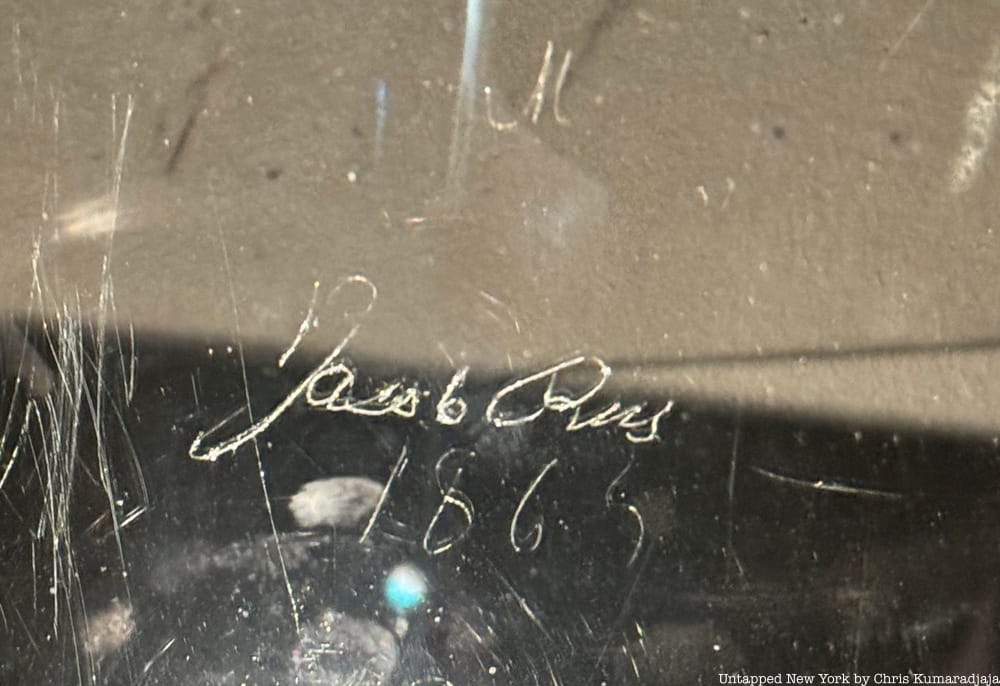
As a New Yorker, I know that my perspective is a bit reversed. Denmark still has many unfamiliarities to me.
On the other hand, New York City to the level of granularity depicted in the museum is unknown and unfamiliar to most Danes, but when the documentary showed images of the before, and after of Columbus Park, I jumped. “I was there last week!” I exclaimed, pointing at the screen.
Both the film and exhibitions mentioned the infamous “Mulberry Bend” and “Five Points,” to which Riis contributed to its replacement, Columbus Park. To my Danish friends, this was a random, unfamiliar place. But to me, it’s right across the street from one of my favorite bookstores.
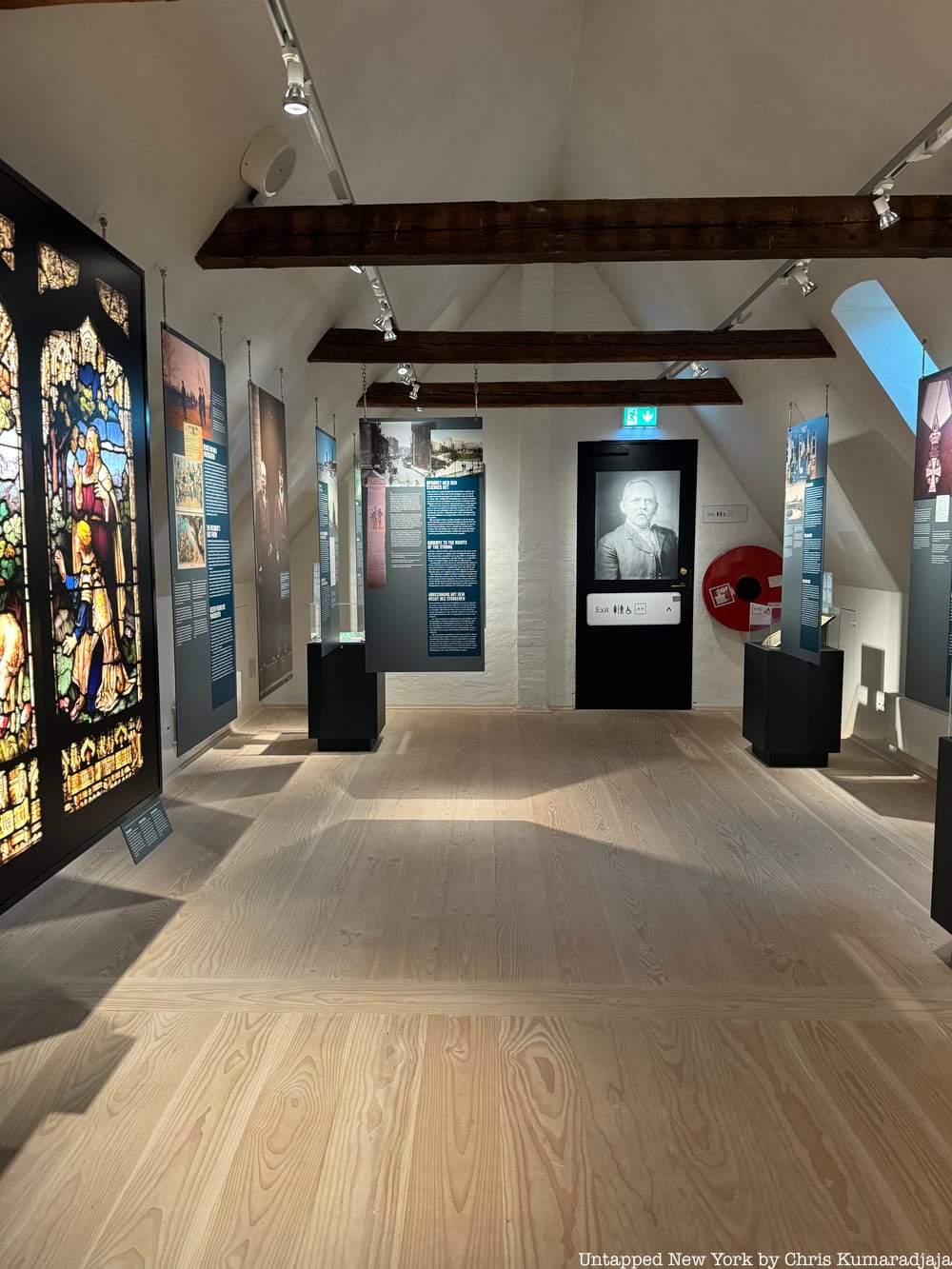
Most Jutlanders never really get used to New York City. After one visit, they will likely never again see so many people at one time. Lost and overwhelmed, —I often joke— they hit the nearest Burger King as they try to get their bearings. The Manhattan of today is even less dense than the Manhattan that Riis experienced and captured. Ribe and New York is an impossible comparison.
Local Danish students are encouraged to learn about the “emigrant” experience, and many local Romantic paintings depict their departure from Denmark. Local school programs within Esbjerg Municipality, in which Ribe is located, train students to visualize themselves embarking on the immigrant experience and encourage them to practice journalistic reporting with a historical perspective.
There’s a photo booth where you can take photos of your visit; you and your friends can use a “box camera” to take photos that you can email to yourself in an environmentally-friendly souvenir, putting you on the cover of a newspaper next to “Little Katie”.
The gift shop has little New York-themed mementos and posters, as well as some Danish literature. Here, I bought a compilation of Riis's early diaries. Reading it, enthralled, I felt like I was able to experience my return to New York with a new novelty. In his diaries, Riis conveys his hardships with imagery so engaging and personal that you feel like you’re on the journey with him from Pittsburgh to Buffalo and eventually to New York City. He truly was, both a capital “R” and lowercase “r” “romantic.” He turned his hardships into a force for change, propelling the American social consciousness into a new era. Although Riis was often frustrated when publishers failed to complement his photography with his writing, or vice versa, it is no wonder that his skill of persuasion was his true, influential asset.
As such, the museum experience impressed upon me the power of biography. Lives are multifaceted, and embodying all of those complexities in exhibit form is an interpretive challenge. When presented impactfully, any visitor can be inspired by the subject’s success and redemption. Pairing real-life objects with the stories behind them carries interpretive power that can make the museum experience more grounded. As for the Jacob A. Riis Museum, Riis' descendants have created an “American Friends Fund,” that accepts monetary and artifactual donations to the museum. The museum boasts copies of Riis’s first-edition publications, as well as some of his personal belongings from his life in America, that were brought to Denmark.
As a history buff and preservationist, I am excited by the role physical material can play in storytelling. Anyone who loves a good story will love this museum and would reflect on and resonate with the life of an incredible individual for some time. And while you’re there, I hope you can soak in the magnificent landscape of southwestern Denmark!
Subscribe to our newsletter